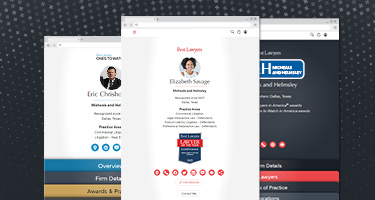On December 30, 2022, Governor Kathy Hochul signed into law legislation that drastically changed the landscape of New York Foreclosure Law. The “Foreclosure Abuse Prevention Act” strengthens a borrower/mortgagor’s legal defense to knock out a foreclosure action on the grounds of the passing of the statute of limitations and codifies when a lender no longer has a right or remedy to collect a debt. The Foreclosure Abuse Prevention Act effectively extinguishes rights and remedies provided to mortgagees by the New York State Court of Appeals.
Ironically, the new law may actually deter lenders from entering into forbearance situations with defaulted borrowers for fear they will have waived their remedy to foreclose.
Presently, the Statute of Limitations to foreclose on a debt is six years from “acceleration” of the debt, or when the lender declares the entire sum of principal and interest due and owing. This sounds simple and straightforward; however, since the 2007-2008 Financial Crisis, the courts have been backlogged with foreclosure cases, and lines have become blurred as to when a debt was actually accelerated if, in a workout situation, it was de-accelerated (which would start the clock running again) and if a lender has a right to reinstitute an action.
Previously, the New York Court of Appeals, through a series of cases, created clear rules to enable mortgage lenders and borrowers to work together to take the borrower out of default and back into good standing under the terms of the mortgage after an event of default and acceleration of the loan amount. In Freedom Mortgage Corp. v. Engel, the court examined four cases on appeal to create hardline rules that state: (i) the parameters for a lawful acceleration of the debt by demanding immediate payment in full of the then outstanding principal at the time of default, thus triggering the statute of limitations period; and (ii) the parameters for a lawful revocation, or de-acceleration, of that valid acceleration. Ultimately, the analysis rests on what constitutes a clear and unequivocal, lawful acceleration or de-acceleration, which had implications for the statute of limitations.
In the first of the series of cases, the court relied on the established case law that a verified foreclosure complaint is valid as a clear and unequivocal act to accelerate the outstanding debt. In supplementing this precedent, the court held that a deficiency in the foreclosure complaint that “renders it unclear what debt was being accelerated” does not constitute a clear and unequivocal, lawful acceleration under foreclosure law. (Freedom Mortg. Corp. v. Engel, 37 N.Y.3d (2021)).
These precedents were applied first in Wells Fargo v. Ferrato, where the loan in question was modified after an initial default by increasing the loan amount and changing the interest rate. (Freedom Mortg. Corp. v. Engel, 37 N.Y.3d (2021)). Upon default on the modified loan, the lender attempted to accelerate the debt by commencing a foreclosure action but failed to attach the modified note and mortgage to the complaint, thus invalidating the acceleration, according to the court. Because the acceleration was deemed legally invalid, the court held the statute of limitations never commenced, and the plaintiff was able to commence a new action on the modified mortgage and outstanding loan balance.
Second, the court applied the rule to Deutsche National Trust Company v. Vargas, deciding that the default notice was not a clear and unequivocal acceleration because “the letter did not seek immediate payment of the entire, outstanding loan, but referred to acceleration only as a future event, indicating the debt was not accelerated at the time the letter was written.” (Freedom Mortg. Corp. v. Engel, 37 N.Y.3d (2021)).
Finally, the court applied the same legal framework to de-acceleration as it did to acceleration, that an unequivocal, overt act to de-accelerate must match the unequivocal, overt act to accelerate. The court said, “… when a bank effectuated an acceleration via the commencement of a foreclosure action, a voluntary discontinuance of that action—i.e., the withdrawal of the complaint—constitutes a revocation of that acceleration.” (Freedom Mortg. Corp. v. Engel, 37 N.Y.3d (2021)).
Ultimately, the practical effect of these rules allows for flexibility between the lender and borrower to return the parties to their pre-acceleration rights under the terms of the mortgage by de-acceleration after an event of default and acceleration. If the aforementioned sequence of events occurs and the lender allows the borrower to resume installment payments upon de-acceleration via a mortgage modification or otherwise, a subsequent default on the loan balance and a second acceleration will not be time-barred by the statute of limitations because the second action is brought for the payment of a new debt. Despite the practicality of the rulings by the Court of Appeals in Freedom Mortgage v. Engel, the legislature interpreted this flexibility as ripe for potential abuse by lenders.
Lenders will need to think carefully before unequivocally accelerating a loan so that the statute of limitations does not start running to their disadvantage."
As a result of these decisions, the New York legislature made sweeping changes to the Real Property Actions and Proceedings Law (“RPAPL”), the Civil Practice Laws and Rules (“CPLR”) and the General Obligations Law (“GOL”), including the Foreclosure Abuse Prevention Act.
In the RPAPL, section 1301 was amended so that no lender may file a second foreclosure action under the same mortgage without leave of court in which the first action was brought. Furthermore, the failure of a foreclosing lender to obtain leave of court will be a defense for the plaintiff in the second action and will automatically end the first action unless the defendant in the first action raises the same defense. Additionally, validly obtaining leave of court does not stop the statute of limitations from running. The final amendment to the section states that a lender cannot bring a second action to foreclose under the same mortgage if the first action has been adjudicated beyond the six-year statute of limitations.
Most changes affecting foreclosures were made in the CPLR. First, the legislature amended section 203, stating that once the statute of limitations starts to accrue by a valid acceleration, no party may unilaterally stop or reset the accrual. Second, section 205-a adds that a plaintiff may commence a second foreclosure action on the same mortgage within six months of the termination of the prior action, provided that the commencement is timely under the statute of limitations. However, the plaintiff may not commence the second action if the first action was terminated for voluntary discontinuance or de-acceleration. Third, section 213 states that a foreclosing lender cannot argue that a prior action brought by the lender did not validly accelerate the debt if the defendant raises a statute of limitations defense. The lender may assert this claim only in the instance of the prior action’s dismissal based on an express judicial determination that the acceleration was invalid. Finally, section 3217 was amended to add a section that voluntary discontinuance by stipulation or notice does not toll or reset the statute of limitations.
The final changes came to the GOL where two subdivisions were added to section 17-105 that supplement the amendments in the RPAPL and CPLR. First, subdivision four was amended to say that an express or implied acknowledgment, waiver or agreement shall not toll, postpone or reset the statute of limitations unless made in accordance with 17-105(1)-(3). Finally, subdivision 5 states a payment or part payment of the principal or a stipulation made in an action or proceeding of foreclosure does not affect the statute of limitations or stop its accrual.
These particular provisions undo the court’s application of the clear and unequivocal rule for de-acceleration in Freedom Mortgage v. Engel, thus preventing the parties from utilizing the flexibility of their contractual rights under the mortgage. Effectively, once the initial acceleration is brought, the statute of limitations accrues and cannot be stopped. This will result in lenders having to follow through on foreclosure actions once the debt is accelerated, preventing lenders from working with borrowers to return the parties to their pre-acceleration rights.
The changes to the New York laws may benefit borrowers in that once an action commences, the statute of limitations starts running, but could be a detriment in that lenders may not be so willing to withdraw a complaint and work out a modification of the loan. Lenders will need to think carefully before unequivocally accelerating a loan so that the statute of limitations does not start running to their disadvantage.
As a result, we anticipate lenders will be more reluctant to enter into a forbearance, or any type of workout arrangement with a defaulted borrower, unless there is a clear, mutually agreed upon, court-recognized de-acceleration of the debt. Lenders may require more, and the threshold for borrowers will be higher in order to be worth the risk. The question arises whether the Foreclosure Abuse Prevention Act helps or hurts the individuals it is meant to serve.
Lindsay Mesh Lotito is a Banking & Finance and Real Estate partner at Forchelli Deegan Terrana LLP in Uniondale, NY. She was most recently included in Best Lawyers: Ones to Watch® in America for 2023 in Banking and Finance Law.
Zachary J. Manasia is an associate in the Banking & Finance and Real Estate practice groups at Forchelli Deegan Terrana LLP.































